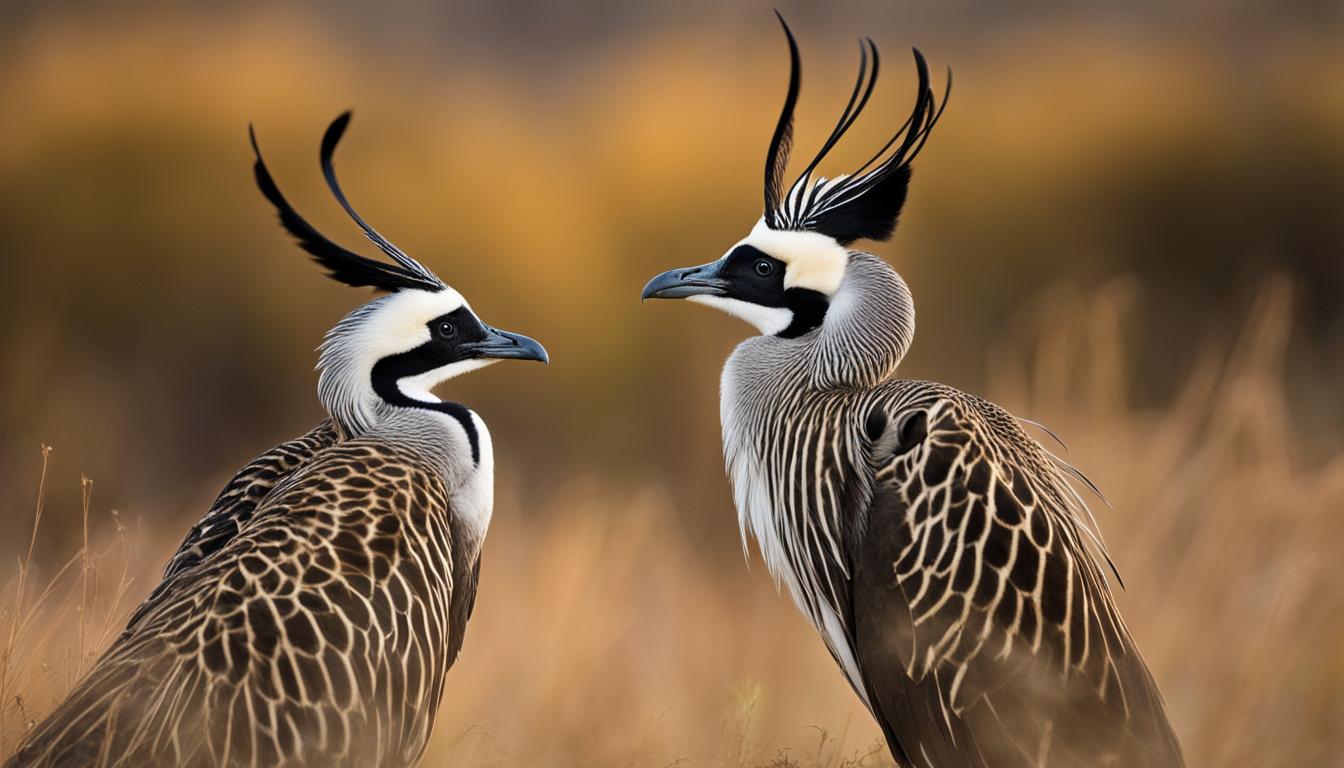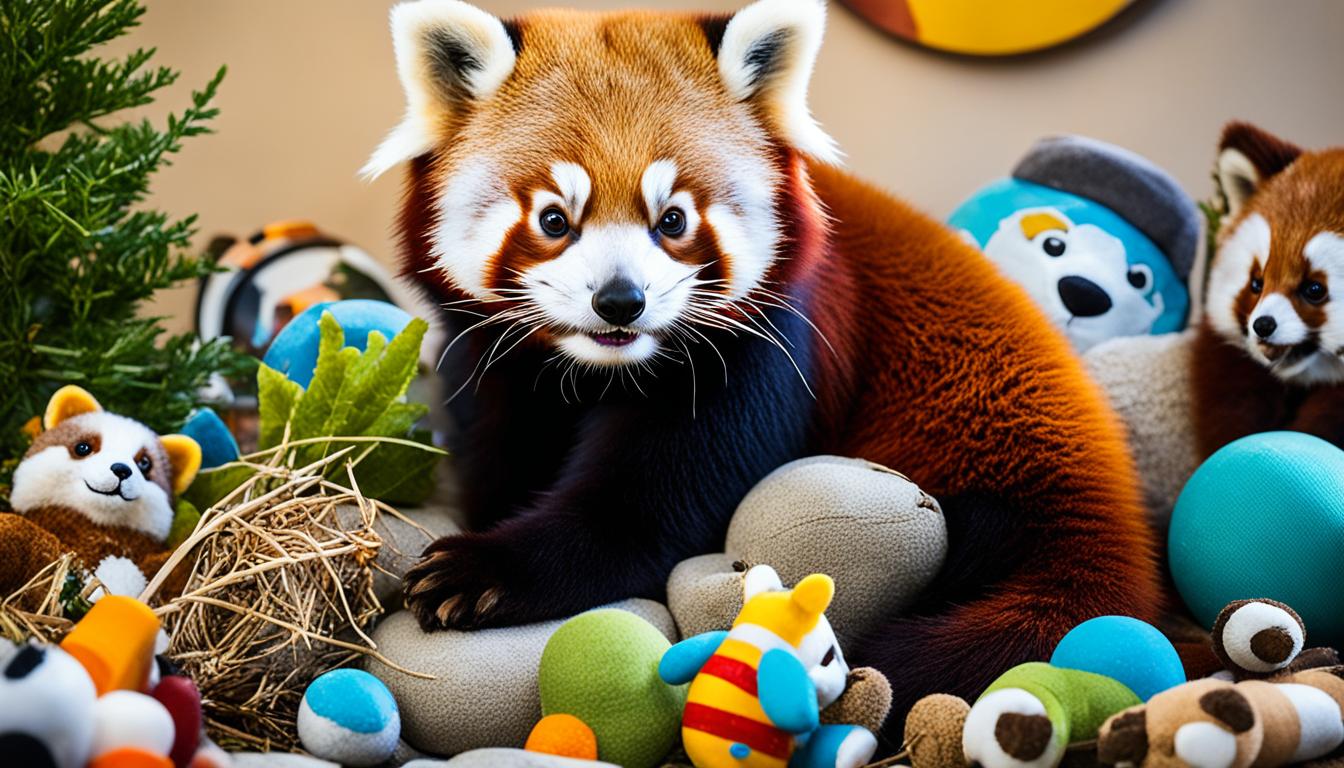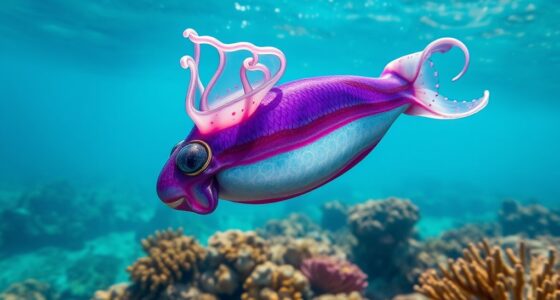Did you realize that animals have a variety of mating behaviors and patterns that are essential for their survival and reproductive success? From monogamous pairs to complex polygynous and polyandrous systems, the realm of animal mating is rich with intriguing complexities and adaptations.
Key Takeaways:
- Animals have diverse mating behaviors and patterns that significantly impact their reproductive success.
- Mating systems can vary, including monogamous, polygynous, and polyandrous systems.
- Factors such as mate choice, competition for mates, and mating displays play crucial roles in animal mating behaviors.
- Understanding animals’ mating behaviors provides insights into genetic diversity and the intricacies of reproductive biology.
- Sexual reproduction offers evolutionary advantages, such as genetic recombination and enhanced defense against parasites and disease.
Why Sexual Reproduction Exists
Sexual reproduction is more common than asexual reproduction among animals because it provides several evolutionary advantages.
Genetic recombination allows for genetic diversity and increased chances of acquiring favorable mutations. Through the exchange and mixing of genetic material, offspring differ from their parents, leading to enhanced adaptation and survival in changing environments. This diversity contributes to the overall fitness and resilience of the population as a whole.
Defense against parasites and disease is another advantage of sexual reproduction. The combination of genetic diversity and the ability to create unique gene combinations increases the likelihood of offspring possessing resistance to parasites and diseases. This reduces the overall impact of pathogens on the population, enhancing survival rates and reproductive success.
Furthermore, sexual reproduction involves distinct roles and strategies for males and females. Females generally produce fewer gametes (eggs) and invest more resources in each one, while males produce many gametes (sperm) and invest less in each. This difference in gamete investment results in varied reproductive strategies between males and females, which can lead to conflict.
| Evolutionary Advantages of Sexual Reproduction |
|---|
| Genetic diversity |
| Increased chances of acquiring favorable mutations |
| Defense against parasites and disease |
| Reproductive strategies between males and females |
Evolution of Mate Choice
Mate choice is a fundamental aspect of mating systems, playing a crucial role in reproductive success and genetic diversity. While males generally have a lower level of selectivity when choosing a mate, females are typically more discerning in their choices. Females may prefer certain males based on various factors, including:
- Potential parenting skills
- Possession of resources that support offspring growth and development
- “Good genes” – traits that predict better offspring survivorship
By carefully selecting their mates, females reduce the risk of losing their reproductive investment and increase the likelihood of producing offspring with higher chances of survival and reproductive success.
It is important to note that male mate choice can also play a significant role in mating systems. In cases where males are involved in caring for offspring or when there is substantial variation in female quality as potential mates within a population, male selection can impact reproductive outcomes and genetic diversity.
Mate choice is a complex process that contributes to the diversification and adaptation of species. The preferences and behaviors associated with mate choice are influenced by evolutionary pressures and individual fitness considerations.
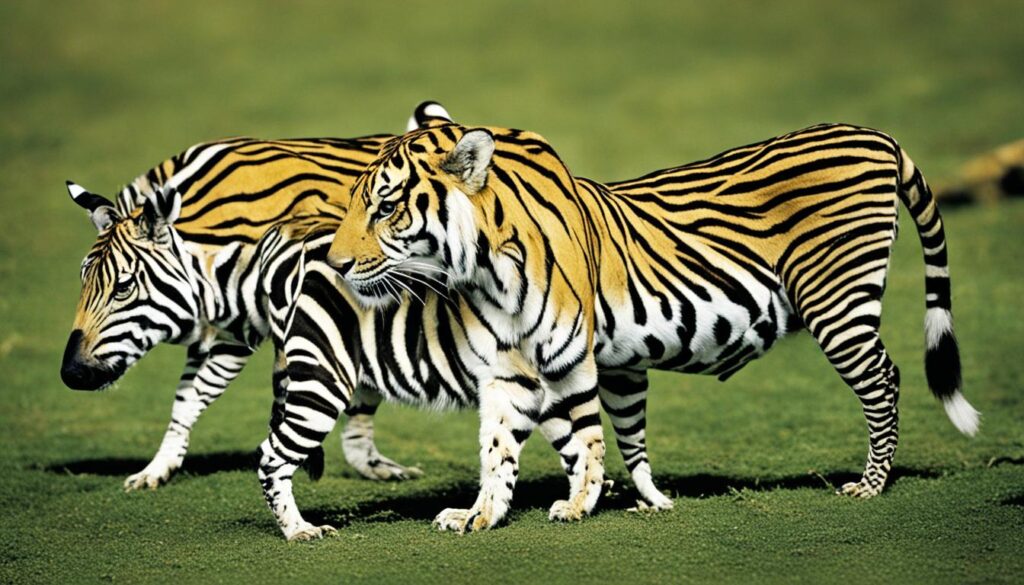
The evolution of mate choice in animals showcases the intricate interactions between individuals, genetics, and the environment. Understanding the mechanisms behind mate choice can provide valuable insights into the dynamics of reproductive strategies and the maintenance of genetic diversity within populations.
Types of Mating Systems
Animal populations exhibit three general mating systems: monogamous, polygynous, and polyandrous.
Monogamous Mating
In monogamous systems, one male and one female form a pair that lasts for at least one breeding season. This mating strategy provides several evolutionary advantages:
- Mate Guarding: By forming a monogamous bond, males are able to protect their mates from potential rivals, ensuring their exclusive access to the female.
- Male Assistance in Parental Care: Monogamous pairs may share the responsibilities of raising offspring, enhancing the survival rates of their young.
- Prevention of Competition: Monogamy minimizes the risk of other offspring competing with the female’s own, preserving resources for the couple’s offspring.
Polygynous Mating
Polygynous mating involves one male mating with multiple females. This mating system can be categorized into two types:
- Resource-Based Polygyny: In this form of polygyny, males secure multiple mates by controlling valuable resources, such as territories or food sources, which attract females.
- Harem-Based Polygyny: Harem-based polygyny occurs when a dominant male maintains a group of females, monopolizing their reproductive opportunities.
Polyandrous Mating
Polyandrous mating, although relatively rare, involves one female mating with multiple males. This mating system is observed in unique cases such as pipefishes and seahorses. In these species, the female transfers her eggs to the male, who then fertilizes and cares for them.
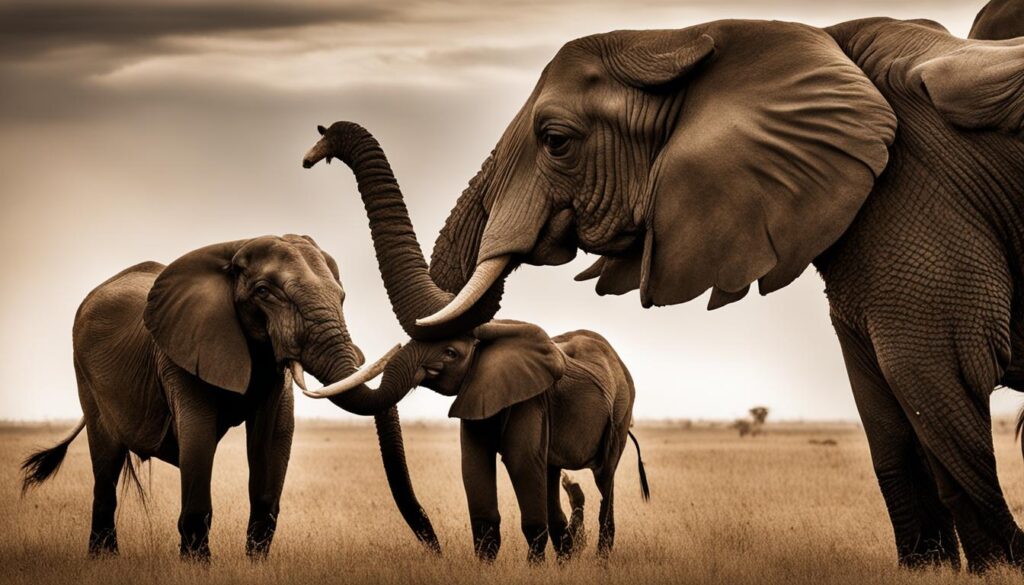
Comparison of Mating Systems
| Mating System | Male-Female Bond | Offspring Care | Offspring Competition |
|---|---|---|---|
| Monogamy | One male and one female | Shared responsibility | Minimized competition |
| Polygyny | One male, multiple females | Varies – may be male or female | Increased competition |
| Polyandry | One female, multiple males | Male care in unique cases | Varies – depends on the species |
Understanding the various mating systems provides insights into the social dynamics and reproductive strategies of animal species. These systems influence not only the distribution of mating opportunities among individuals but also the behaviors and adaptations that enhance reproductive success.
Intersexual and Intrasexual Mate Selection
Mate selection involves two types of selection: intersexual selection and intrasexual selection. Intersexual selection occurs when individuals of one sex choose mates of the other sex based on various cues. Intrasexual selection involves competition for mates between members of the same sex.
During intersexual selection, individuals display certain characteristics to attract potential mates. These characteristics are often referred to as secondary sexual characteristics. They may include physical traits such as elaborate plumage, bright coloration, or exaggerated body structures. These characteristics enhance attractiveness to the opposite sex and help individuals stand out from competitors.
“In intersexual selection, individuals have to impress and win over the opposite sex. They showcase their best features and engage in specific behaviors to increase their chances of mating success. This type of selection is a result of mate choice, where individuals of one sex actively assess and select mates based on certain traits.”
Intrasexual selection, on the other hand, revolves around competition for mates within the same sex. This competition often manifests in mating displays and aggressive rituals, where individuals fight or compete for access to potential mates. The purpose of intrasexual selection is to determine the most dominant individuals within a population who will have the privilege of mating.
Examples of Intersexual and Intrasexual Mate Selection:
Let’s take a closer look at some examples of intersexual and intrasexual mate selection in the animal kingdom:
| Species | Intersexual Mate Selection | Intrasexual Mate Selection |
|---|---|---|
| Peafowl | Male peafowl (peacock) display their vibrant, iridescent tail feathers to attract females (peahens). | Male peafowl engage in competitive displays, spreading their tail feathers and vocalizing to establish dominance and secure mates. |
| Gorillas | Female gorillas select mates based on the strength, size, and social status of the males. | Male gorillas engage in physical fights to establish dominance and reproductive rights within a group of females. |
| Red Deer | Female red deer choose mates based on the size and quality of antlers displayed by male red deer. | Male red deer engage in physical combat to establish dominance and access to females during the mating season. |
These examples illustrate the importance of intersexual and intrasexual selection in determining mating success and reproductive outcomes in various animal species.
Finding Sexual Partners
Animals that reproduce sexually invest significant energy in finding suitable mates and competing with others to obtain them. The process of locating, attracting, and mating with a compatible partner is crucial for reproductive success. Two types of selection play a role in mate choice: intersexual selection and intrasexual selection.
Intersexual Selection
Intersexual selection occurs when individuals of one sex choose mates of the other sex based on various cues. These cues can be visual, aural, tactile, or chemical, and they play a vital role in attracting potential partners. Females, in particular, are often selective in choosing mates, as they invest more in each offspring and seek traits that indicate genetic fitness and good parenting abilities. Such cues may include elaborate displays or physical attributes that enhance attractiveness.
Intrasexual Selection
Intrasexual selection involves competition for mates between members of the same sex. Male competition for access to females is a common form of intrasexual selection. This competition can take various forms, such as physical combat, display of dominance, or elaborate courtship rituals. The most successful males, those who win the competition, are more likely to secure mating opportunities and pass on their genes to the next generation.
“The competition for mates can be fierce, with males engaging in elaborate displays or physical confrontations to gain an advantage. These behaviors showcase their fitness and ability to provide desirable genetic traits to potential offspring.”
Both intersexual and intrasexual selection contribute to the overall dynamic of finding sexual partners in the animal kingdom. While intersexual selection focuses on the preferences and choices made by individuals of one sex, intrasexual selection highlights the strategies employed by individuals of the same sex to outcompete their rivals.
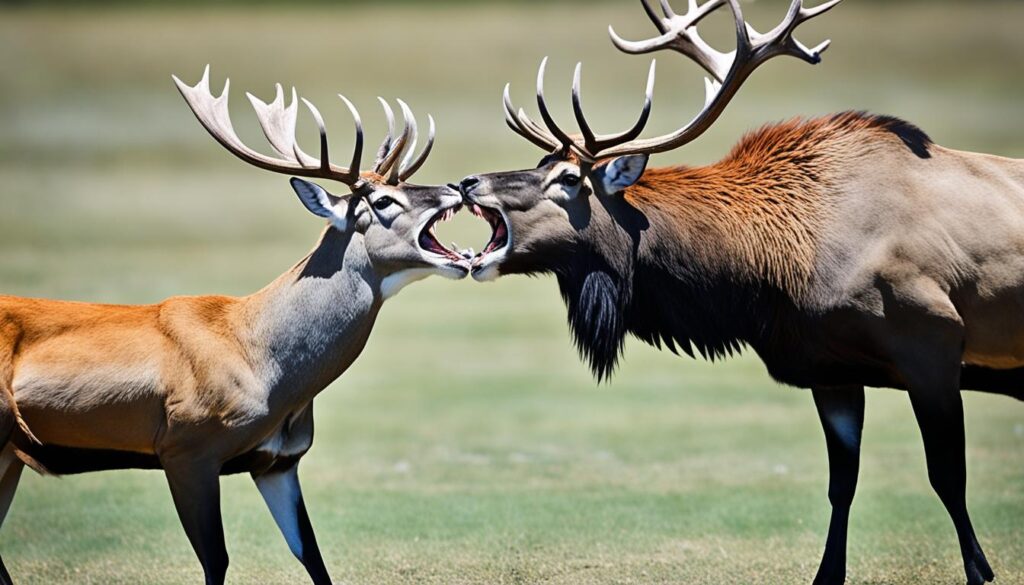
| Intersexual Selection | Intrasexual Selection |
|---|---|
| – Based on cues that indicate genetic fitness and good parenting abilities | – Involves competition between members of the same sex |
| – Visual, aural, tactile, and chemical cues play a role | – Physical combat, display of dominance, or courtship rituals |
| – Females are often selective in choosing mates | – Males compete for access to females |
Understanding the processes of intersexual and intrasexual selection provides valuable insights into the complexities of finding sexual partners in the animal world. These selection mechanisms contribute to the formation of diverse mating strategies and ensure the survival and reproduction of individuals with advantageous traits and abilities.
Types of Mate Selection
Mate selection plays a crucial role in the dynamics of animal mating systems. Different mating systems can be categorized based on the relationships between males and females. Let’s explore three common types of mate selection: monogamous, polygynous, and polyandrous.
Monogamous Mating Systems
In monogamous mating systems, one male and one female form a pair and remain together for at least one breeding season. Monogamy can have several evolutionary advantages, such as:
- Mate guarding: The male can protect the female from potential competitors, ensuring the survival and reproductive success of their offspring.
- Male assistance in parental care: Both parents contribute to raising and nurturing the offspring, increasing their chances of survival.
- Prevention of other offspring: By forming a monogamous bond, the female can prevent other males from fathering offspring that might compete with her own.
Polygynous Mating Systems
In polygynous mating systems, one male mates with multiple females. This type of mating is observed in various species and can be resource-based or harem-based. The advantages of polygyny include:
- Access to more potential mates: The male has the opportunity to mate with multiple females, increasing his reproductive success.
- Enhanced genetic diversity: By mating with multiple females, the male can produce a larger number of offspring with diverse genetic traits.
- Resource acquisition: Some polygynous males control valuable resources that attract multiple females, ensuring their exclusive access to these resources.
Polyandrous Mating Systems
Polyandrous mating systems involve one female mating with multiple males. Although less common than monogamy and polygyny, polyandry can be observed in certain species such as pipefishes and seahorses. The benefits of polyandry include:
- Increased genetic diversity: By mating with multiple males, the female can produce offspring with diverse genetic traits.
- Mating with genetically superior males: The female can selectively choose high-quality males as mates, increasing the overall fitness of her offspring.
- Shared parental care: In polyandrous species, males often contribute significantly to parental care, allowing the female to mate with other males and produce more offspring.
Intersexual and Intrasexual Selection
In the process of mate selection, individuals can engage in intersexual selection or intrasexual selection. Intersexual selection involves individuals of one sex choosing mates of the other sex based on a variety of cues, such as physical appearance, behavior, or resources. Intrasexual selection, on the other hand, involves competition for mates between individuals of the same sex. This competition can take the form of elaborate displays or aggressive rituals.
Secondary sexual characteristics, such as vibrant plumage or elaborate courtship dances, often evolve through intersexual selection. These traits enhance attractiveness and signal genetic fitness to potential mates. Intrasexual selection leads to the development of physical traits and behaviors that help individuals succeed in competing for mates.
Comparison of Mate Selection Types
| Mating Type | Description | Advantages |
|—————-|———————————-|——————————————————————-|
| Monogamous | One male, one female pair | Mate guarding, male assistance in parental care, prevention of rivals |
| Polygynous | One male, multiple females | Access to more potential mates, enhanced genetic diversity, resource acquisition |
| Polyandrous | One female, multiple males | Increased genetic diversity, mating with genetically superior males, shared parental care |
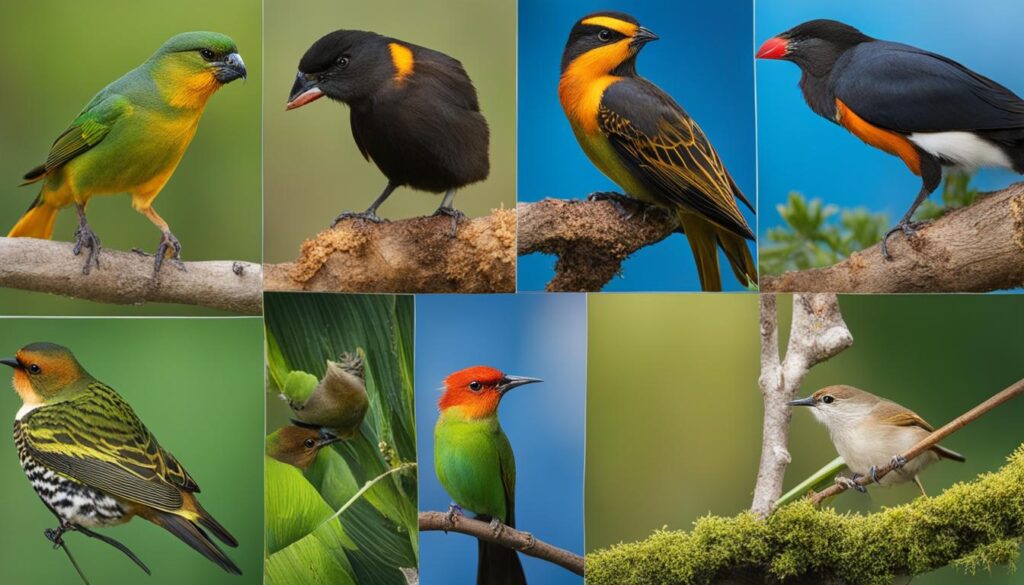
Each type of mate selection has its own advantages and complexities. The variations within each mating system further contribute to the diversity of animal mating behaviors. Understanding these different types of mate selection helps us comprehend the intricate ways in which animals navigate the fascinating realm of mating.
Function and Adaptive Significance of Mating Behaviors
Mating behaviors play a crucial role in an individual’s reproductive success and show a great deal of adaptive variation and flexibility. These behaviors involve various social interactions, including mate choice, competition for mates, and parental care.
The function of mating behaviors is to enhance an individual’s reproductive fitness and increase the chances of successful reproduction. Through mate choice, individuals select partners based on specific traits and characteristics that may indicate genetic benefits or enhanced survival of the offspring.
Mating behaviors can be influenced by both inter- and intraspecific variation, meaning they can vary within and between species. Different populations or individuals within a species may exhibit different mating behaviors based on their specific environmental conditions and social dynamics.
Sexual selection, a specific form of natural selection, also plays a significant role in shaping mating behaviors. It involves the preferential selection of mates based on certain traits or behaviors that can increase an individual’s chances of reproductive success.
Mating behaviors can evolve through processes such as runaway selection and the evolutionarily stable strategy. Runaway selection occurs when certain traits become exaggerated and preferred by the opposite sex, leading to the perpetuation of these traits in subsequent generations. The evolutionarily stable strategy refers to behaviors or traits that maintain equilibrium in a population because they provide a fitness advantage.
To get a closer look at how mating behaviors function and their adaptive significance, let’s explore some examples:
Example 1: Mate Choice in Birds
In many bird species, males perform elaborate courtship displays to attract females. These displays can involve intricate dances, vibrant plumage, and melodious songs. The females then select mates based on the quality of these displays, which serve as indicators of the males’ genetic fitness and ability to provide for offspring.
Example 2: Competition for Mates in Elephant Seals
Male elephant seals engage in intense physical battles to establish dominance and gain access to breeding territories. The strongest and most dominant males, known as “alpha males,” mate with the majority of females in the colony, ensuring their genes are passed on to future generations. This competitive behavior maximizes their reproductive success.
Overall, the function and adaptive significance of mating behaviors lie in their ability to enhance reproductive success and promote genetic diversity within a population. These behaviors are shaped by both natural and sexual selection, allowing individuals to maximize their chances of successful reproduction.
| Mating Behaviors | Reproductive Traits | Sexual Selection |
|---|---|---|
| Mate choice | Indicators of genetic benefits | Preferential selection based on traits |
| Competition for mates | Physical dominance or fitness | Selection based on aggressive or competitive behavior |
| Parental care | Investment in offspring survival | Choice of partners based on parenting potential |
“Nature has designed intricate mating behaviors to ensure the successful continuation of life. Through mate choice and competition for mates, animals navigate the complex world of reproduction, ultimately shaping future generations.”
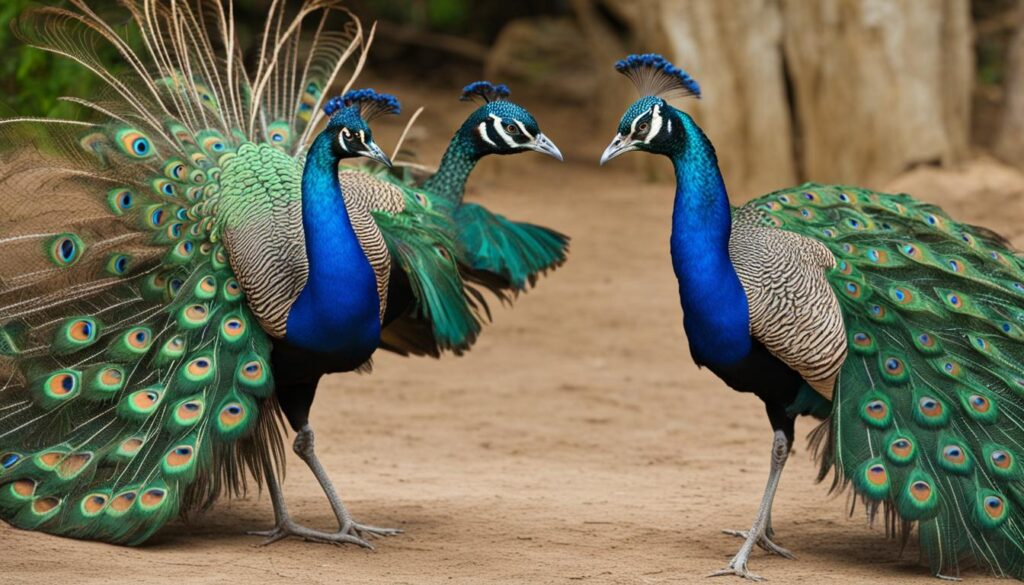
Role of Stress in Mating Behavior
Stress plays a significant role in shaping mating behavior across different species. The effects of stress on mating behavior can be inhibitory, impacting an individual’s motivation for mating and the functioning of the hypothalamic-pituitary-gonadal (HPG) axis. This can lead to decreased reproduction and affect reproductive success.
When experiencing stress, individuals may exhibit a decrease in sexual desire, impaired fertility, and produce lower-quality sperm or eggs. These effects can have implications for the individual’s ability to successfully mate and pass on their genes.
The impact of stress on mating behavior is influenced by various factors, including social status, environmental conditions, and exposure to stressors. High-stress environments and social instability can contribute to disruptions in mating behavior and reproductive success.
It is important to note that stress may also have adaptive value in certain circumstances. For example, in times of environmental adversity or limited resources, delaying reproduction until more favorable conditions exist can enhance an individual’s chances of reproductive success.
Effects of Stress on Mating Behavior:
“Stress may decrease reproduction and lead to decreased sexual desire, impaired fertility, and lower-quality sperm or eggs.”
Understanding the role of stress in mating behavior is vital for comprehending the complexities of reproductive strategies and their effects on evolutionary success. By studying the impact of stress on mating behavior, researchers can gain insights into the adaptive responses of different organisms to changing environments.
Factors Influencing Stress on Mating Behavior
| Factors | Influence |
|---|---|
| Social Status | Stress levels can vary based on an individual’s social hierarchy, impacting mating behavior. |
| Environmental Conditions | High-stress environments can affect mating behavior and reproductive success. |
| Exposure to Stressors | Direct exposure to stress-inducing factors can disrupt mating behavior. |
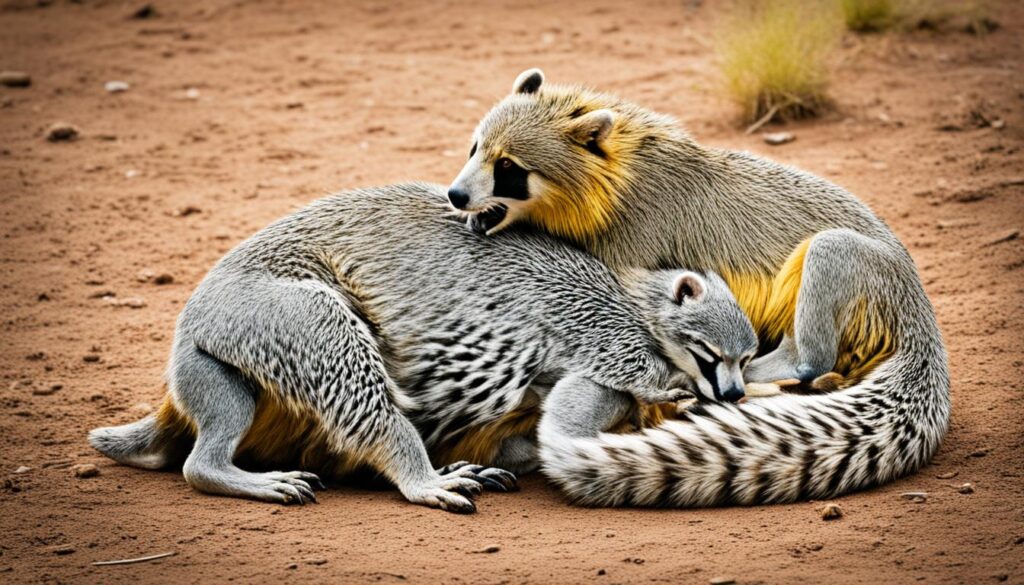
Complexities of Mating Behavior in Crustaceans
Crustaceans, a diverse group of arthropods, exhibit a wide range of fascinating mating behaviors that are intricately linked to their lifestyle and ecological adaptations. Understanding these complexities provides valuable insights into the reproductive activities of crustaceans.
A common feature observed in many crustacean species is precopulatory mate guarding, a behavior that ensures reproductive success when female receptivity is tied to a specific molt. During this guarding behavior, males protect females from other potential mates, increasing their chances of successful reproduction.
Mating associations further contribute to the complexity of crustacean mating behaviors. These associations include searching for potential mates, female-centered competition, resource-centered competition, and alternative mating strategies. Each of these behaviors adds a layer of complexity and variation to the mating dynamics of crustaceans.
Mate choice and sexual selection also play important roles in the reproductive success and genetic benefits of crustaceans. Mate choice allows individuals to select mates based on desirable traits, resulting in increased fitness and potentially better offspring survival. Sexual selection, driven by intersexual competition and mate choice, contributes to the diversification and evolution of crustacean populations.
Additionally, mating behaviors in crustaceans can give rise to intersexual conflicts, where individuals may engage in competitive behaviors to secure mating opportunities. These conflicts and the resultant interactions between males and females contribute to the evolutionary diversity and adaptations seen in crustaceans.
To summarize, the complexities of mating behavior in crustaceans encompass various strategies such as mate guarding, mating associations, mate choice, sexual selection, and intersexual conflicts. These behaviors are shaped by ecological adaptations and contribute to the evolutionary diversity observed in crustacean populations.
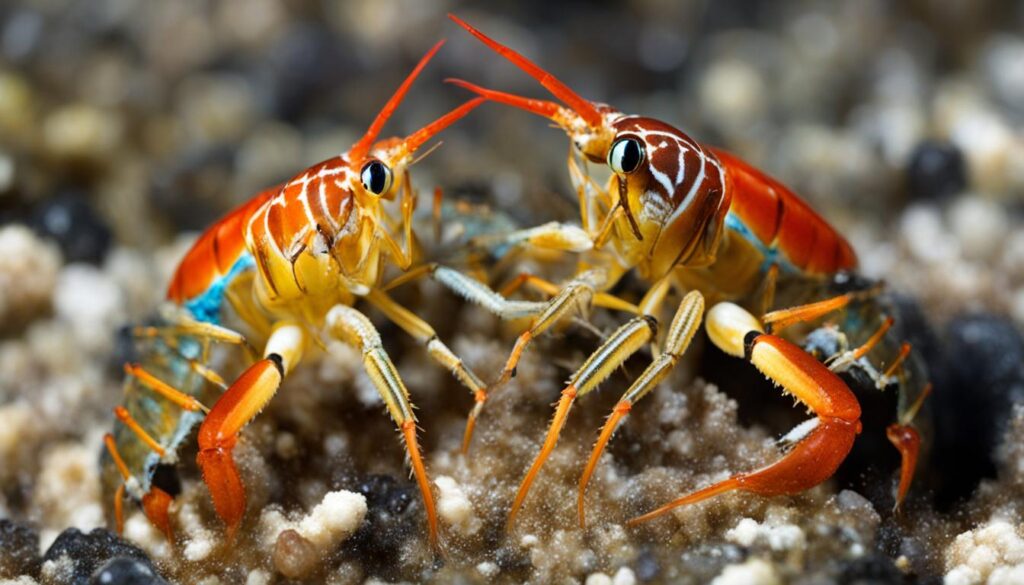
Examples of Crustacean Mating Behaviors
| Mating Behavior | Description | Examples |
|---|---|---|
| Precopulatory mate guarding | Males guard females prior to mating to ensure reproductive success. | Male fiddler crabs guarding females in burrows. |
| Searching | Individuals actively seek out potential mates. | Male leafhoppers searching for females by following pheromone trails. |
| Female-centered competition | Females compete with each other for access to males. | Female red king crabs competing for access to high-quality males. |
| Resource-centered competition | Individuals compete for limited resources necessary for successful reproduction. | Male fiddler crabs competing for control of prime burrows. |
| Alternative mating strategies | Individuals employ different tactics to increase their mating success. | Male porcelain crabs using body size mimicry to mate with unsuspecting females. |
Adaptive Variation in Insect Mating Behaviors
Insect mating behaviors are far from being static within species, challenging the traditional view that these behaviors are relatively invariant. In fact, they exhibit adaptive variation and flexibility, reflecting the diverse strategies insects employ in their quest for reproductive success.
Social information, such as cues from potential mates, plays a significant role in shaping individual choices in mate selection among insects. These cues can range from visual signals like coloration or pattern to chemical signals emitted by pheromones. By assessing these cues, insects can make informed decisions about their potential partners.
Furthermore, insect mating behaviors serve multiple functions beyond simply facilitating reproduction. They can enhance an individual’s reproductive fitness by ensuring successful copulation and fertilization. Moreover, these behaviors can promote the expression of survival-related traits, such as increased agility or camouflage, which provide an adaptive advantage in the face of predation. Additionally, certain mating behaviors can act as signals of genetic quality, indicating superior genetic traits that are advantageous for offspring survival and fitness.
The evolutionary stability of different mating behaviors in insects is influenced by game theory, whereby different strategies are maintained within a population due to frequency-dependent selection. The distribution of participants in a specific mating system also plays a crucial role in determining the adaptive significance of different behaviors.
Empirical studies have shed light on the complexity of insect mating behaviors and the interplay between sexual selection and natural selection. These studies have shown that insects possess a remarkable array of adaptive strategies, allowing them to thrive in diverse ecological niches.
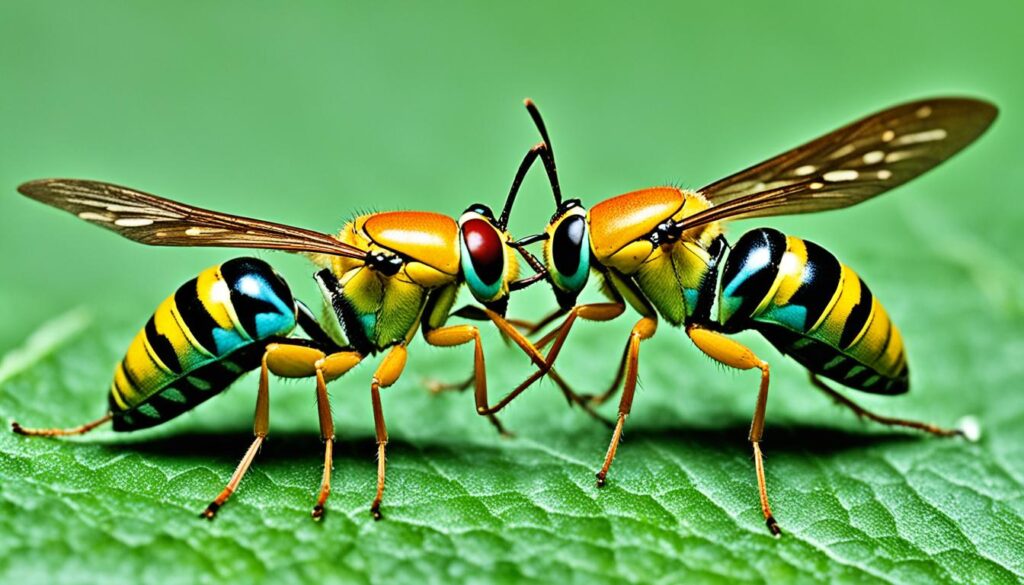
Conclusion
Understanding animals’ mating behaviors is essential for gaining insights into the fascinating and diverse world of reproduction. Mating systems, mate choice, competition for mates, and other mating behaviors all play significant roles in determining reproductive success and maintaining genetic diversity among animal species.
One of the key advantages of sexual reproduction is genetic recombination, which promotes variation and increases the chances of acquiring beneficial mutations. Additionally, sexual reproduction helps in defending against parasites and diseases, contributing to overall reproductive success.
However, mating behaviors can vary greatly across species, influenced by factors such as social status, reproductive strategies, and ecological adaptations. Further research into mating behaviors is crucial for unraveling the intricate mechanisms of reproductive biology and gaining a deeper understanding of animals’ mating habits and patterns.
By studying animals’ mating behaviors, scientists and researchers can uncover the complex dynamics of reproduction and gain valuable insights that can be applied to various fields, including conservation, animal behavior, and evolutionary biology. It is through this understanding that we unlock the secrets of the reproductive world and appreciate the remarkable diversity and complexity of nature’s cycles.
